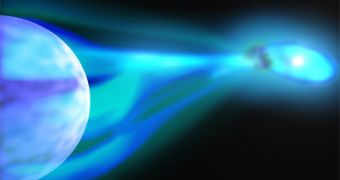The Big Bang theory suggests that, in the early life stages of the universe, a massive number of black holes might have been created. Although not as massive as most of the black holes created from stellar remnants, a part of these tiny black holes might still be lurking through space. In the 1970s, the famous physicists Stephen Hawking showed that singularities are allowed to exist in the fabric of space-time. Furthermore, a black hole cannot exist forever and would eventually slowly evaporate away through a Hawking radiation.
The Milky Way contains a great deal of antimatter in its central nucleus, and is mostly believed to have originated from black holes inside binary stellar systems. On the other hand, astrophysicists calculate that the black holes population alone would not be able to produce the observed quantities of antimatter, thus there must be a second source.
Supernovae and dark matter decay seem to fit the theory precisely, but Cosimo Bambi from the Wayne State University proposes that the elusive primordial black holes may in fact be hiding in the center of our galaxy, and are slowly producing antimatter as they decay through Hawking radiations. The rate which a black hole would evaporate at mostly depends on its gravitational field, thus its mass. Meaning that supermassive black holes release very little quantities of elementary particles, while primordial black holes, with mass equivalent to that of an average asteroid, would produce the correct amount of antimatter, in the form of positron elementary particles.
On top of that, the primordial black holes in the center of the Milky Way would also represent a large fraction of the dark matter in our galaxy. To present with a method to experimentally test the newly developed theory, Bambi calculated the exact amount of anti-particles other than positrons emitted through the Hawking radiation. By doing so, he predicts that the calculated antimatter quantity would result in an increase in gamma ray radiation, usually emitted by matter-antimatter decay in the center of the galaxy.
The ESA INTEGRAL spacecraft is just one of the probes capable of detecting the gamma ray radiation, but it is mostly believed that the amount of time needed to make such observations would be prohibitive. NASA's GLAST mission is not even capable of working in the predicted energy spectra.

 14 DAY TRIAL //
14 DAY TRIAL //